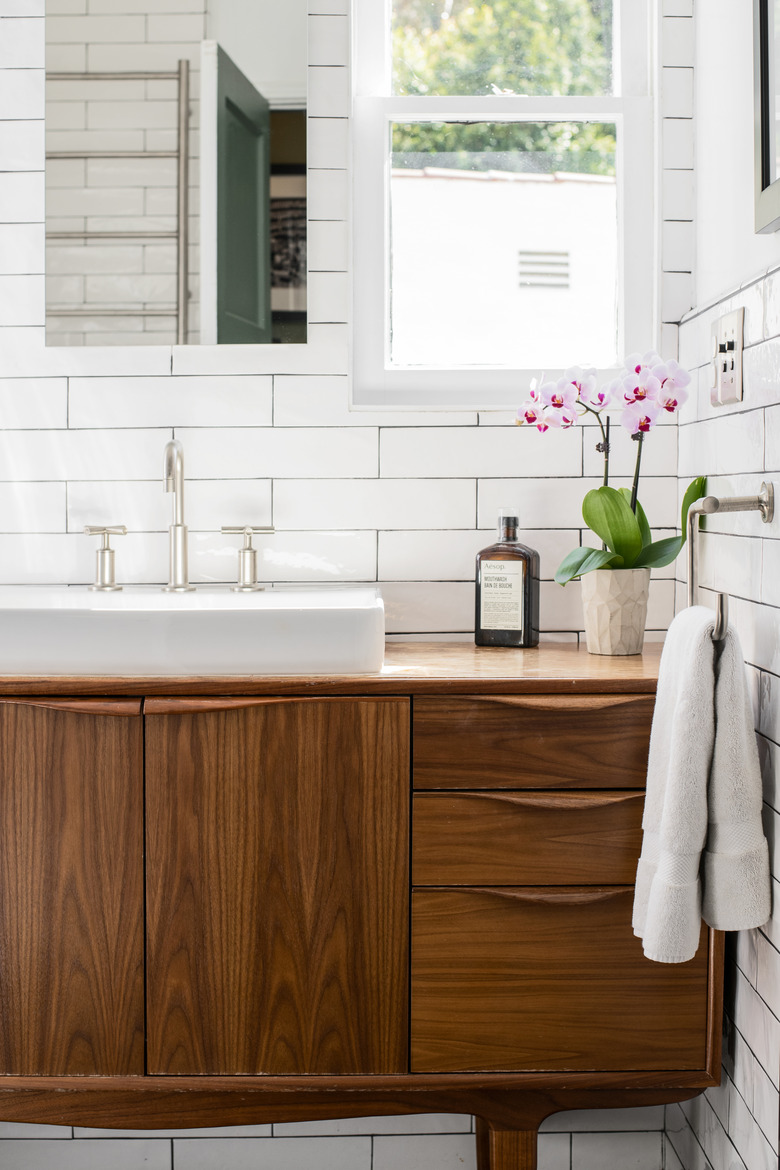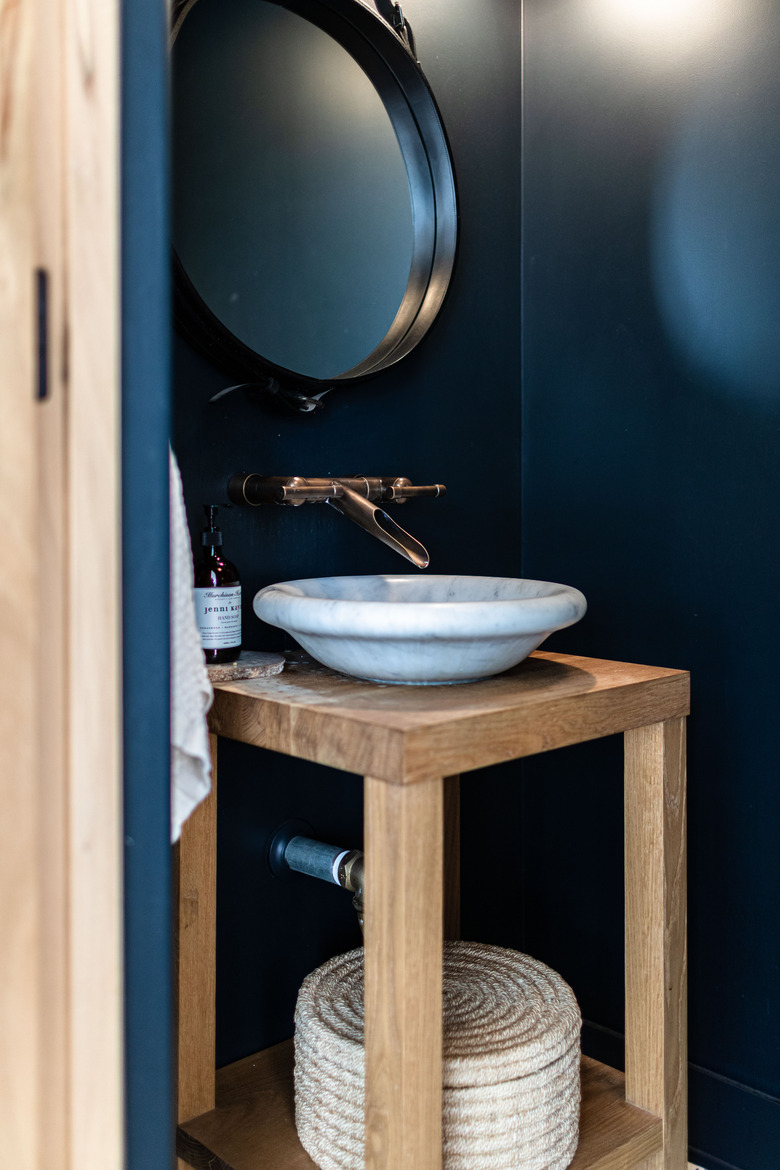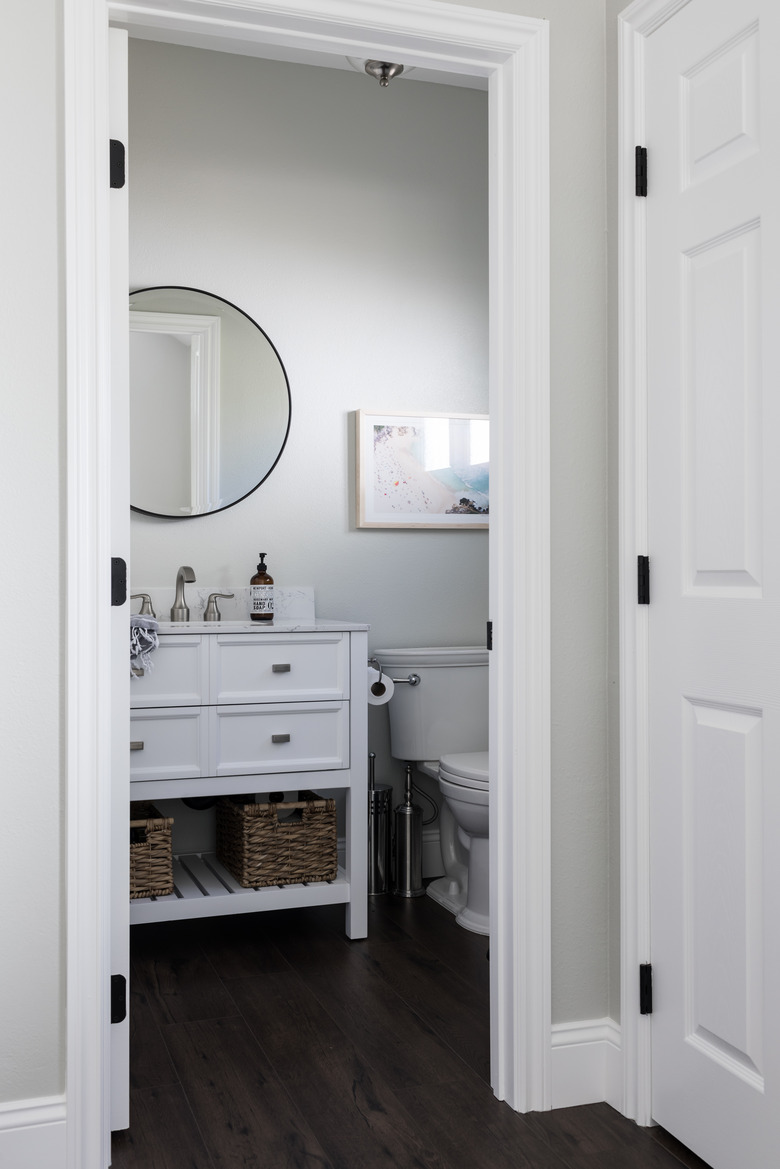Free-Standing Bathroom Vanity: What You Should Know
Whether you're going for a traditional feel with your bathroom decor or just prefer the tried and true, a free-standing bathroom vanity may work for you. You'll find tons of styles and colors from which to choose, and most free-standing models offer lots of storage space. They can make cleaning your floor a bit more difficult, however, and can make small bathrooms feel more cramped. Weigh both the good and bad aspects of this bathroom vanity type before making your choice.
"Free-Standing" Bathroom Vanity is Misleading
"Free-Standing" Bathroom Vanity is Misleading
It's important to be aware that free-standing bathroom vanities aren't really free standing. This type of bath vanity does rest on the floor and can generally stand on its own, but you must still anchor these vanities to the wall. Because they rest on the floor, free-standing vanities do support most of their own weight, unlike wall-mounted or floating vanities. They may not, however, support your weight.
If you lean heavily on your bathroom vanity or sit on the edge, your weight could cause an unsecured vanity to shift. Pulling out heavily laden vanity drawers could do the same. If the vanity does shift, the plumbing connected to the sink could move with the vanity, causing leaks or breakage. In addition to breaking water pipes, a shifting bath vanity could fall on you and potentially cause serious injuries.
Properly installed vanities last for years and are very safe. In this case, staying safe means taking the term "free standing" with a grain of salt.
Free-Standing Bathroom Vanity Pros
Free-Standing Bathroom Vanity Pros
Because they're so popular and have been around for such a long time, many manufacturers make free-standing bathroom vanities. As a result, you'll have many styles, sizes and designs from which to choose when shopping. Unlike floating vanities, free-standing units don't rely on the countertop as part of their structural integrity. You can buy a vanity with a sink and countertop included, or you can buy one without and choose your own for a touch of customization——like a carrara marble top or another type of stone countertop.
Free-standing vanities also come in standard sizes. This can make it very easy to swap out your old vanity for a new one that will fit perfectly. According to cabinet distributor Keidel, standard vanity sizes range from a scant 18 inches wide for small powder rooms to 72 inches wide with space for two sinks. The standard depth is 20 to 23 inches, while vanity heights vary from 32 to 36 inches.
Generally speaking, a free-standing bathroom vanity contains more drawer and cabinet space than a floating unit. Unless you're moving plumbing or going smaller, free-standing models are much easier to install than others as well. They'll also save you some cash. A professionally installed free-standing vanity will cost you an average of $1,200, while a floating vanity installation is around $1,500. Cost does vary, however, based on your vanity's size, materials and local market rates for installation.
Free-Standing Bathroom Vanity Cons
Free-Standing Bathroom Vanity Cons
Free-standing bathroom vanities work well overall, but they do have some downsides. One is that they make it harder to clean the bathroom floor. You'll need to watch out for dirt that gathers around the vanity's feet and sweep up dust bunnies that find their way under the unit. If you have a small bathroom, the wrong free-standing vanity can feel bulky and can make the room look smaller.
If you currently have a standard-sized vanity and replace it with one of the same size, the swap should be easy. If you opt for a different size, however, you may need to move your plumbing or redo areas of the floor that were previously covered by the old vanity. This can add costs to the project even if you're doing it yourself. If you need the help of a plumbing or flooring pro, the cost could go up even more.
Overview of Bathroom Vanity Installation
Overview of Bathroom Vanity Installation
The first step in installing a new free-standing bathroom vanity is to turn off the water and remove the old unit. Once it's out, patch the walls, paint and clean as needed. Move your plumbing and repair or replace the bathroom floor as needed. Find and mark the studs in your wall and, if necessary, assemble your new vanity.
To install the new vanity, slide it into place and then screw it into the wall studs to anchor it. If the back is closed, you'll need to drill holes for plumbing pipes first. According to Modern Bathroom, the screws you use to anchor your vanity in place shouldn't be more than 1 inch long. This will help ensure that you don't accidentally put a screw through any of the pipes inside your wall.
Install the countertop and sink in the vanity once it is in place and plumb everything in. When the countertop is level and you're happy with the way it looks, run a bead of clear caulk along the back edge of the vanity where it meets the wall.


